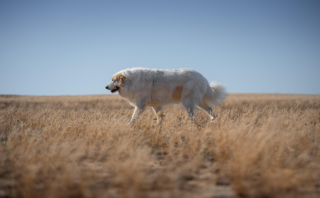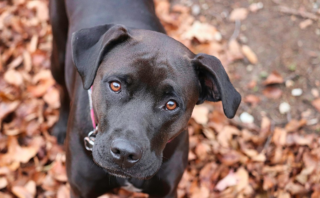Easy Dog Training Tips: A Child-Friendly Guide for Beginners
1. Introduction
Teaching children how to interact with dogs is an essential skill that fosters loving relationships between them. Dog training for kids not only helps in easing interactions but also develops a sense of responsibility and empathy among young ones. This is what our article covers in detail.
1.1 Brief overview of dog training for kids
[IMAGE_1]
Dog training for kids is about teaching children how to behave with dogs and, at the same time, instructing dogs on how to interact with children. This mutual understanding can be achieved by learning basic commands like sitting, standing, fetching, and stopping. It also includes more complex training like dealing with dogs’ aggressive behaviors and how to keep dogs from jumping on visitors.
1.2 Importance of dog training for kids
Training dogs is a valuable opportunity for kids to learn about respectful animal care and handling. It also strengthens the bond between the pet and the child while promoting responsible pet ownership. Besides these, dog training also ensures a safer environment for both parties involved. It minimizes the chances of accidents or misunderstandings leading to unwanted situations. So, if you are considering a pet dog for your family, involving your child in the training process should certainly be a part of your plan.
2. Basic Commands and Tricks Kids Can Teach a Dog
Teaching a dog some basic commands and tricks is a fun activity that also helps strengthen the bond between children and their furry friends.
2.1 Sit Command
The sit command is a good starting point. Kids can teach this by holding a treat above the dog’s nose and then moving it over their head, which makes the dog naturally sit. Reward the dog immediately after it sits.
2.2 Stay Command
The stay command can be a bit challenging, but it’s crucial for the dog’s safety. Children should ask the dog to sit, then take a step back and say “stay”, rewarding the dog for not moving.
2.3 Come Command
The ‘come’ command can be taught in a fenced area. With the dog off-leash, the child should squat down and say “come”, again rewarding the dog when it obeys.
2.4 Paw/Shake Hands Command
For the shake hands command, kids can gently tap the back of the dog’s paw while saying “paw”, and then reward it once the paw is lifted.
2.5 Roll Over and Play Dead Command
The ‘roll over’ or ‘play dead’ commands are more complex, generally requiring the dog to be lured with a treat to roll over or lie down and then remain still. This trick requires patience and lots of rewards.
3. Tips to Make Dog Training Fun and Effective for Kids
Training dogs can be not just a form of discipline, but a bonding experience with children. Here are tips to make the process enjoyable and productive.
3.1 Make Training a Game: How to make it fun
Make dog training feel like playtime rather than a chore for children. Incorporate fun activities like fetch, tug, and hide-and-seek into training sessions. This will keep both the child and the dog engaged and motivated. [IMAGE_2]
3.2 Use Rewards: The importance of positive reinforcement
Rewarding dogs for good behavior is crucial in training. Encourage the child to reward their pet with treats, praises, or belly rubs, creating positive associations with correctly executed commands.
3.3 Be Consistent: The importance of repetition and consistency in commands
To successfully train a dog, kids must learn the importance of consistency. Repetition of commands in similar tone and gestures instills discipline, helps the pet understand expectations, and leads to desired behavior.
3.4 Practice Patience: Teaching kids to be patient during training
Training requires patience, as dogs may not grasp commands quickly. Teach children to remain calm and composed throughout the process to prevent discouragement and miscommunication.
3.5 Safety Tips: Ensuring Safety of both the child and the dog during the training process
Lastly, safety is paramount. Include guidelines such as never tugging the dog’s collar, not leaning over the dog, and avoiding aggressive games. The while training should be a positive experience for both the child and the dog.
4. The Benefits of Kids Training Their Dogs
Dog training is an essential element of responsible pet ownership and it holds significant advantages for children as well.
4.1 Responsibility: Learning to take care of another living being
Dog training teaches children responsibility, as they learn that other beings rely on them. It fosters a deep understanding of commitment, nurturing a sense of responsibility towards another living creature.
4.2 Confidence: Boosting kids' self-esteem through successful training
The success achieved in dog training can immensely boost a child’s confidence. When dogs respond positively to commands, children realize their ability to achieve goals, enhancing their self-esteem.
4.3 Bonding: Strengthening the bond between the child and the pet
Dog training is not merely about teaching commands; it’s a bonding exercise. Through training sessions, children learn to communicate with their pets, leading to a stronger emotional connection.
4.4 Social skills: Learning communication and social skills
Training a dog requires clear and direct communication. Children improve their social skills in this process, learning how to express themselves effectively.
4.5 Activity: Keeping kids active and engaged
Finally, dog training keeps kids active and engaged, helping them enjoy their time with their pets while providing a fun alternative to screen time. Overall, dog training is highly beneficial, contributing to a child’s holistic development.
5. Conclusion
5.1 Recap of the Important Points
In conclusion, training a dog requires patience, consistency, and a good understanding of the dog’s behavior. As a child, learning to train a dog can be an excellent way to foster responsibility, empathy, and communication skills. Remember, simple commands like sit, stay, come, are easiest to start with. Always encourage your dog with positive reinforcements.
5.2 Encouragement for Kids to Begin or Continue the Dog Training Journey
Dog training is an empowering experience for children, making them the ‘leader’ of their pet. It drives a fun interaction framework and builds a bond between the child and the dog. If you’re a kid who is already on this journey, keep going! And if you haven’t started yet, get on board! The joy of seeing your furry friend respond positively to your commands is truly priceless!
Frequently Asked Questions
1. Is dog training suitable for kids?
Yes, dog training can be suitable and beneficial for kids. It not only helps in establishing a strong bond between the child and the dog but also teaches them responsibility, empathy, and compassion. However, the training should always be supervised by an adult to ensure the safety of both the child and the dog.
2. What age should a child be to start dog training?
While there is no specific age, typically a child around the age of 5 or 6 starts to develop the necessary patience and understanding required for dog training. It’s essential that the child is able to follow instructions, respect the dog’s boundaries, and understand the responsibility involved in training a dog.
3. What type of tasks can kids handle in dog training?
Kids can handle various simple tasks in dog training, such as teaching the dog to sit, stay, or come on command. They can also help with leash training and play-based training like fetch. However, more complex tasks like aggression control or advanced obedience training should be left to adults or professional trainers.
4. How can we ensure safety during dog training for kids?
Safety during dog training for kids can be ensured by constant adult supervision. The adult can guide the child and intervene if the dog becomes too excited or the child becomes frightened. Training should always be conducted in a safe, enclosed environment. Also, it’s important to make sure that the child knows not to tease or harm the pet and to give it space when needed.
5. What are some helpful tips for kids training dogs?
Patience is key in dog training. Kids should be taught to remain calm and patient, even if the dog does not follow the commands immediately. Using positive reinforcement, like treats or praises, can make the training process easier and more enjoyable for both the kid and the dog. It’s also important for kids to understand that training is a gradual process, and consistency is crucial for success.
6. What should a child do if the dog is not responding to training?
If a dog is not responding to a child’s training attempts, it could be due to various reasons. The dog might not understand the command, or might be distracted, scared, or not motivated enough. In such cases, an adult or a professional trainer should step in to assess the situation and adjust the training approach as needed.
7. Can dog training for kids improve the child’s overall personality and development?
Yes, dog training can be a great way for children to develop various skills like patience, empathy, responsibility, and understanding. It can also boost their self-esteem and confidence as they see the results of their efforts in the dog’s behavior. Training a dog can also teach them about communication, cause-and-effect, and problem-solving.
Conclusion
In conclusion, dog training for kids is an educational and rewarding experience that not only imparts valuable lessons about responsibility, compassion, and understanding, but also strengthens the bond between child and pet. It helps children learn about communication, patience, and empathy, while also offering them the practical skills to handle a dog responsibly. Incorporating methods such as positive reinforcement, consistency, and setting clear boundaries can make the training process both effective and enjoyable for kids.
Moreover, training a dog can also enhance a child’s self-confidence and leadership skills as they learn to guide and control their pet’s behavior. It’s important to remember that the process should be fun, engaging, and age-appropriate. Adult supervision is crucial to ensure safety and effectiveness during training sessions. With the right approach and tools, dog training can be a fantastic educational activity for kids, fostering a lifelong love and respect for animals.



